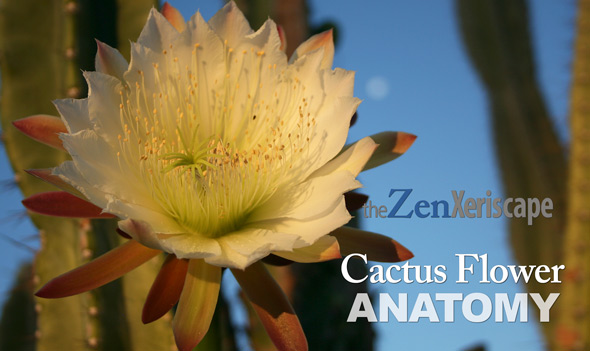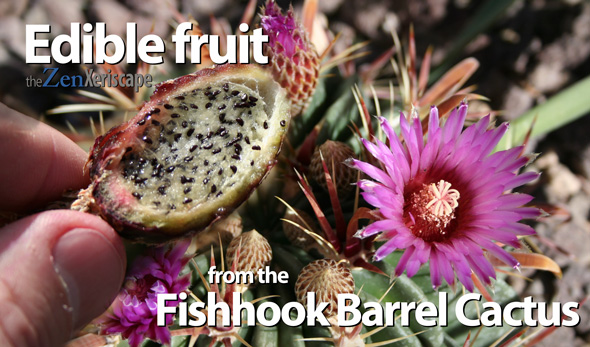The saguaro cactus (Carnegiea gigantea) epitomizes the Old West. It gets big, it’s tough, and it can take the heat. In fact, the saguaro cactus not only looks majestic in its natural habitat, but it can also make a big statement in your landscape. Read about the saguaro cactus pros and cons, and see if this emblematic cactus will work in your arid landscape.
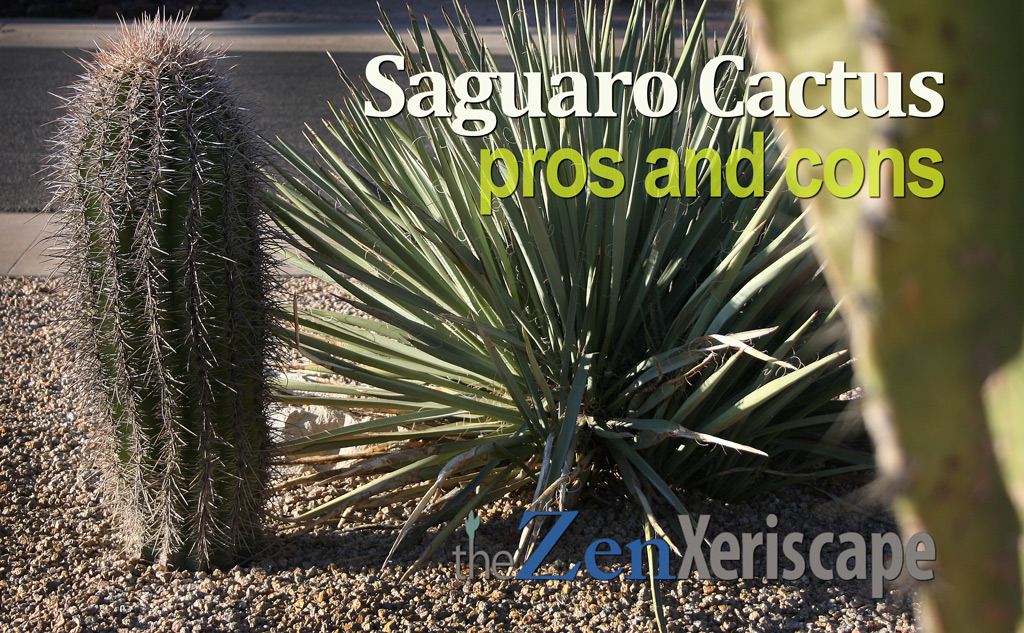
but it can still add southwestern flair
to any arid landscape.
Photo by Doug Martin
But first, let’s describe the saguaro cactus…
Saguaro Cactus description
Description:
The Saguaro only grows naturally in the Sonoran Desert, which includes southern Arizona, extreme-southern California, and Baja California, which is in northwestern Mexico. It is among the tallest cacti growing in the United States.
During the first 10 years of the Saguaro’s life, it might only grow a couple inches a year. As it matures, the Saguaro can grow faster, and by 35 years old, it will begin producing flowers.
By the time it reaches 70 years, the Saguaro might begin to grow its first-of-possibly many side arms. By the time this tough cactus reaches maturity, it might be 70 feet tall.
Some saguaros have lived more than 200 years, but the typical life span is 150 to 175 years. That is an impressive life span for something that lives in such barren, inhospitable environments.
And now for the benefits and challenges of having the saguaro cactus in your arid xeriscape.
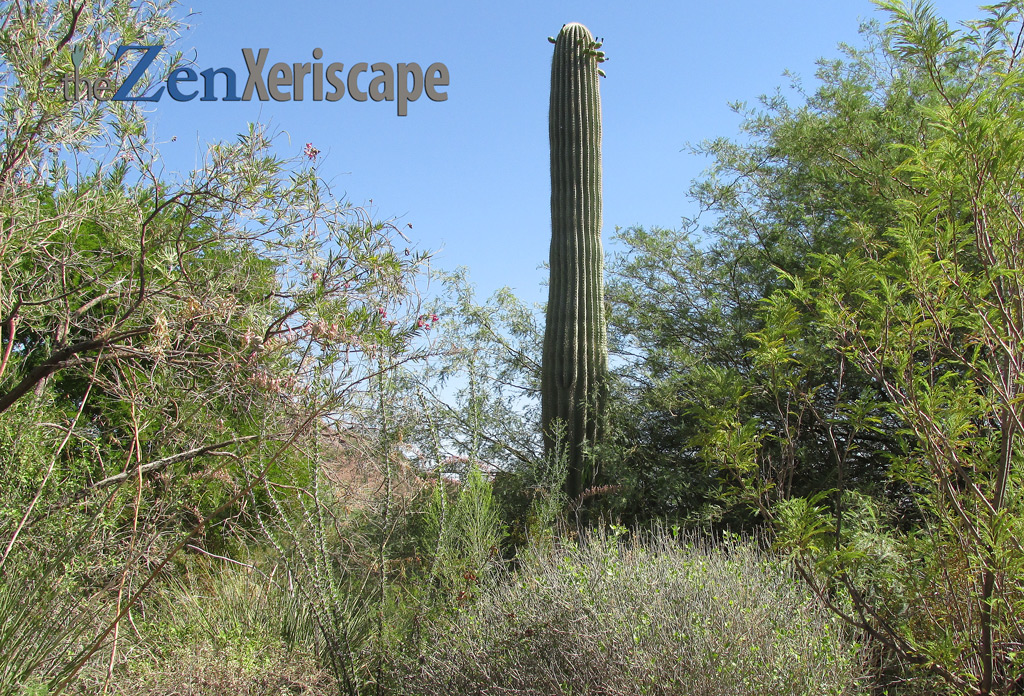
When small, this saguaro was shaded by
neighboring native plants and bushes.
Photo by Doug Martin
Get Prime! (As an Amazon Associate, I earn a commission from qualifying purchases.)
Saguaro Cactus pros and cons
PROS:
Dramatic desert aesthetic:
Ever since I was a boy, I loved the desert. And the most symbolic icon of desert life is the saguaro cactus. It gets big and has long spines which glisten in the morning sun—this cactus would create a dramatic focal point in your southwestern landscape.
Once your saguaro cactus gets large enough, it will produce flowers and fruit, which attracts wildlife.
Provides food and shelter for wildlife:
Saguaros have flowers which attract bats, bees, and birds. The enticing red fruit that follows also provides food for birds and other wildlife. Or, you can eat the fruit yourself.
In addition, many birds, including Gila woodpeckers, chisel out holes or nesting cavities in the saguaro. Often, bald eagles or red-tailed hawks will perch on their tall saguaros as they scan for rodents or other prey.
Low maintenance:
I have never fertilized my two-foot-high saguaro cactus, yet it looks healthy and is growing nicely (but slowly). During the summer, I water deeply only once-a-month or less (depending on rainfall). And, there is nothing to prune on this cactus—just let it grow.
Drought-tolerant:
The saguaro cactus grows naturally in parts of the Sonoran Desert, so they are adapted to very low water usage. In my southern Arizona landscape, I water my smaller saguaro only monthly, and that depends on the rainfall we normally receive.
During the winter, I might water every other month, depending on the weather and rainfall.
Heat-tolerant:
My saguaro cactus has survived 120 degree fahrenheit temperatures without a problem. However, very young and smaller saguaros might need partial shade in the afternoon. As their roots develop and they continue to grow, their ability to withstand full-desert sun will increase each year.
During the winter, saguaros can briefly tolerate temps in the low 20s F. For lower winter temperatures, provide protection. Here in Phoenix, Arizona, I have never needed to protect my saguaro cactus from cold temps.
For best success, plant outside only in USDA hardiness zones of 9-to-11 (or 8b with winter protection). Inside your home, your normal room temperatures will work well for your container-bound saguaro.
Varied uses, inside and outside:
When I bought my saguaro cactus, it was a little less than a foot tall. At that point I could easily have put it in a container or large planter. I think saguaros in planters are wonderful, creative ways to use this cactus inside your home or outside in your landscape.
Place the planter by your swimming pool, or next to a Russian sage perennial in your landscape. The creative ways to use a potted saguaro cactus are limited only by your imagination.
Even if you live in a colder, wetter climate, you can have a saguaro cactus in your home.
And of course, you can always plant your saguaro outside in your landscape. Don’t forget, though, that saguaros do best in hardiness zones of 9-to-11.
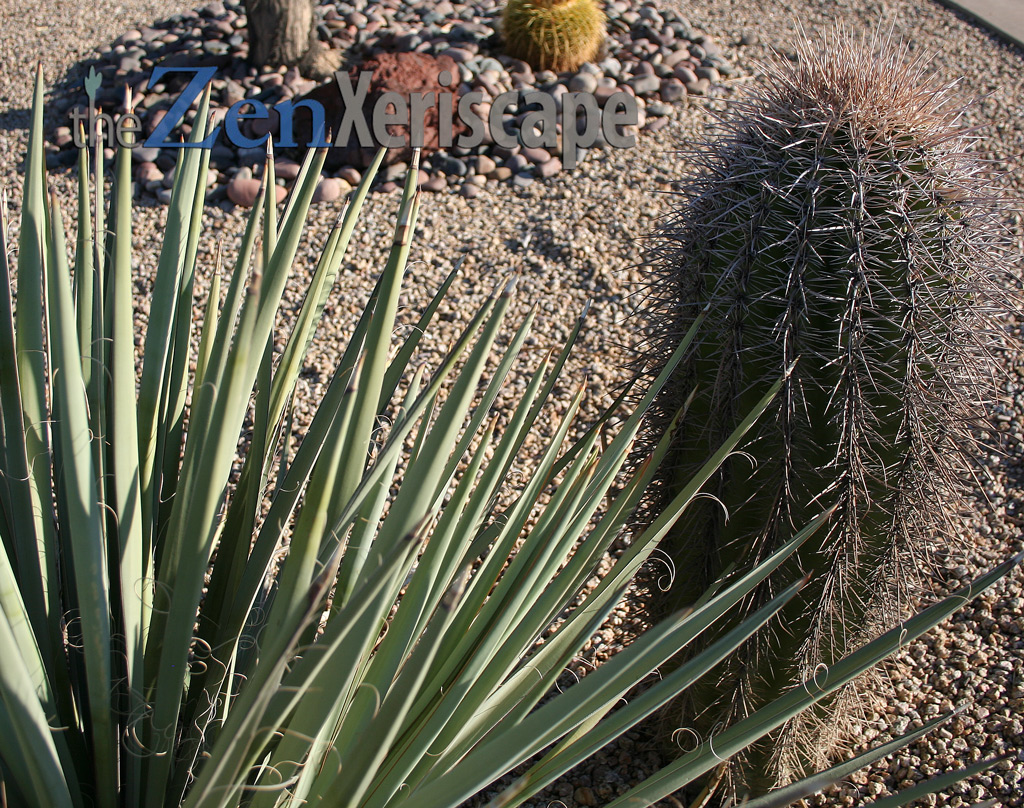
Although still small, this saguaro still
gives off a big southwestern vibe.
Photo by Doug Martin
Saguaro Cactus pros and cons
CONS:
Slow rate of growth:
In 2017, I bought a one-foot-tall saguaro cactus for my xeriscape. After eight years in the ground, it has reached almost two-feet in height. So yes, the saguaro cactus grows slowly.
In nature, this cactus only develops its first arms after 60-or-more years. So, if you’re on a budget, you’ll have to start with a small saguaro, just like I did.
Potentially large space requirements:
When you plant your saguaro, be sure it has enough room to grow. Only plant in areas where it won’t interfere with utility lines, sidewalks, or neighboring buildings.
Long sharp spines:
The saguaro’s spines are very long and very sharp. Use caution with placement. Do not plant near walkways, common areas with pedestrian traffic, or in areas where children and pets play.
Can be dangerous and destructive:
In my suburban Phoenix, Arizona location, I often see mature saguaros leaning over a neighbor’s wall or sidewalk. Because of their massive weight (many tons), a falling saguaro can be dangerous and destructive.
Once a saguaro dies, collapses or falls over, it can be expensive to remove the remains and repair the damage.
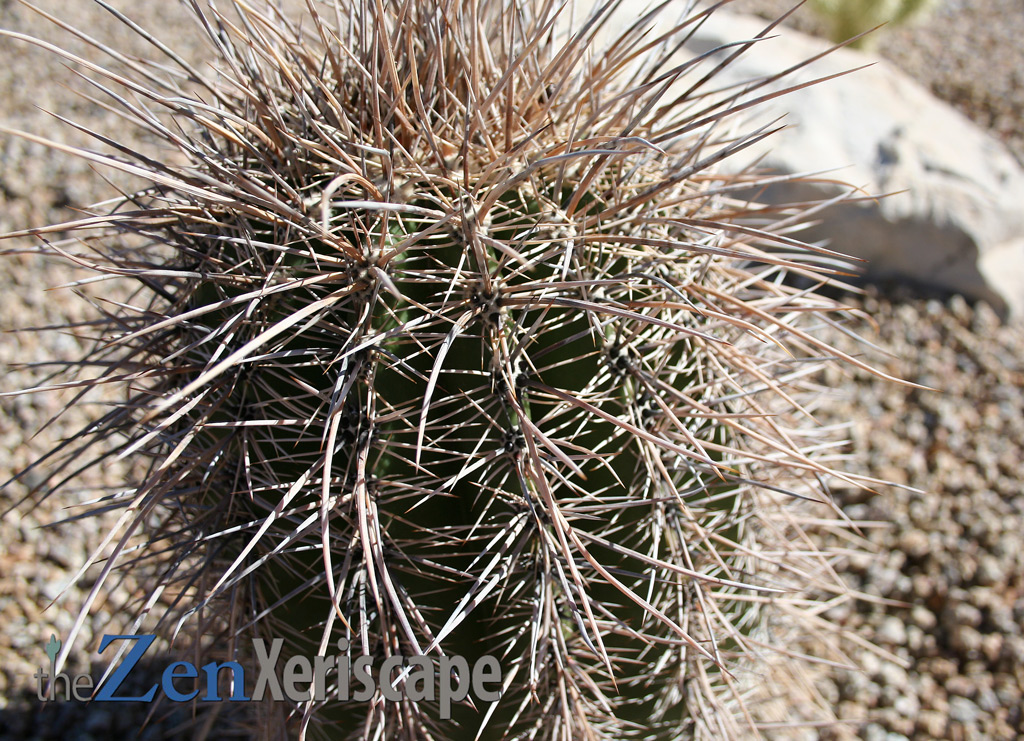
and very sharp spines. Use caution when handling.
Place in areas away from children and pets.
Photo by Doug Martin
Susceptible to root rot:
When overwatered, the saguaro cactus is susceptible root rot and bacterial necrosis. When planting your saguaro, be sure it is located in elevated areas and planted in soil that drains well. Do not plant in areas with pooling water.
Mature saguaros can be very expensive:
To add a tall, mature saguaro cactus to your landscape can be expensive. They take multiple decades to mature, so their elevated costs reflect the required time and investment.
In addition, they are difficult to move and tricky to transplant. The high logistical costs reflect the decades it took to grow mature saguaros, as well as the specialized relocation equipment.
Takeaways:
Saguaro Cactus pros and cons
The saguaro cactus is the quintessential plant of the desert. By adding this cactus to your landscape, you will instantly convey a southwestern theme.
This cactus is hardy, heat-tolerant, and requires very little maintenance (once established). The only drawback is that it grows slowly, but that can also be a benefit. For instance, a saguaro cactus that you add to a planter can be a low-maintenance, high-impact part of your inside living space.
Overall, the saguaro cactus is an almost must-have addition to any arid landscape or xeriscape. I have one, and I love it!
Content and photos by Doug Martin and The Zen Xeriscape


